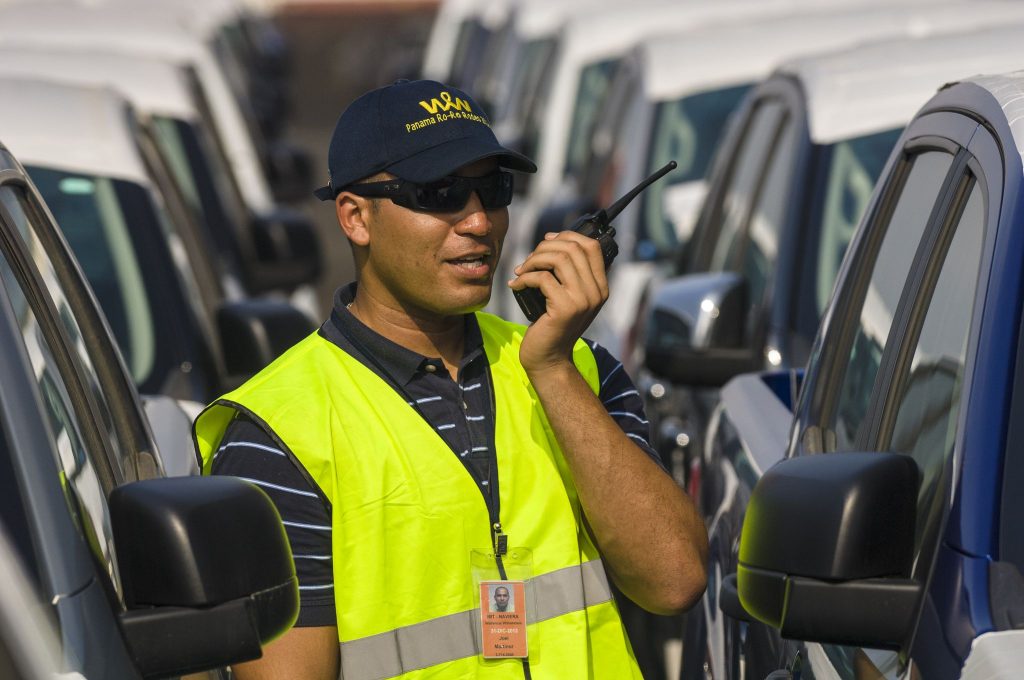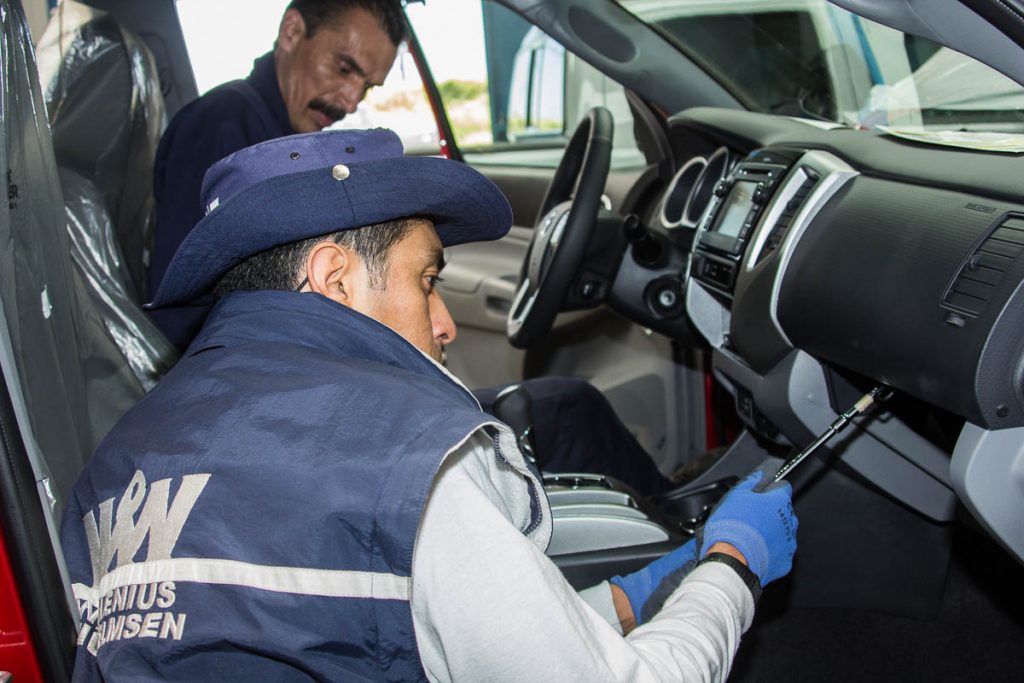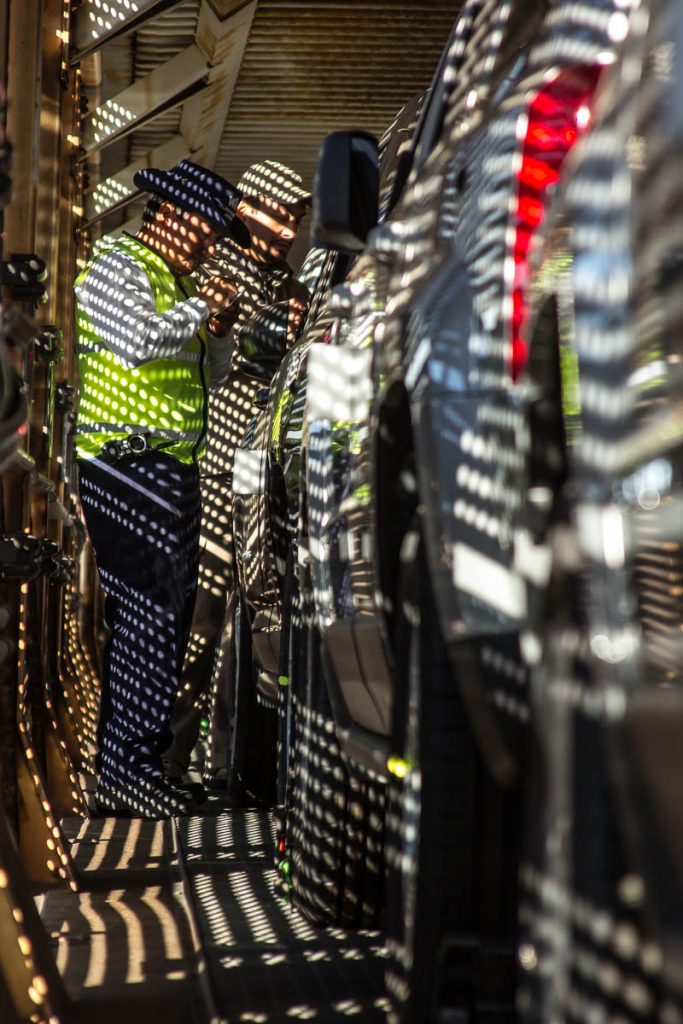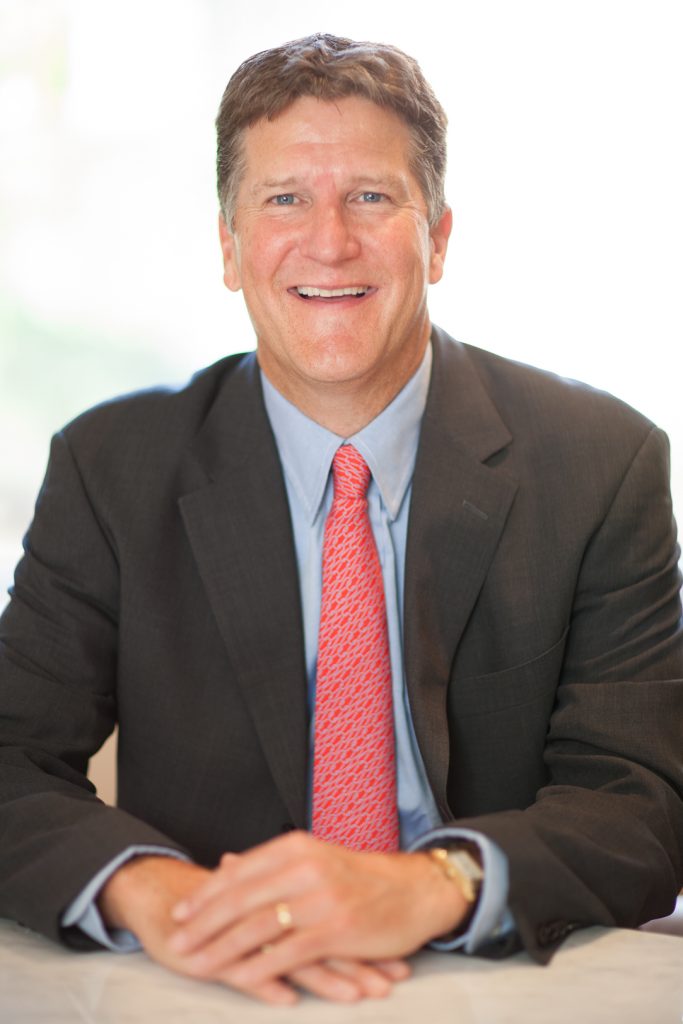 WWL’s chief executive, Christopher J. Connor talks about the dramatic changes that have breached the ro-ro sector this past decade, and how he aims to navigate the years to come
WWL’s chief executive, Christopher J. Connor talks about the dramatic changes that have breached the ro-ro sector this past decade, and how he aims to navigate the years to come
In this story...
Ten years may be a long time in publishing (especially these digital days), but for the shipping industry, it is only a drop in the harbour of time. A ten-year-old pure-car-and-truck carrier (PCTC) is still young in its 30-year expected lifetime, while a decade barely registers on the timeline of some companies. Sweden’s Wallenius Lines has owned ships for more than 80 years and specialised car carriers for 60, while Norway’s Wilh. Wilhelmsen Group traces its origins back more than 150 years, long before a single motor vehicle was even on the road.
Despite this history, the basis of the Scandinavian ro-ro giants’ current combined fleet and logistics operations began with the formation of Wallenius Wilhelmsen Logistics (WWL) on the cusp of the 21st century in 1999. Since then, changes in the sector have been dramatic, with the last decade possibly the most disruptive. “You hear it everywhere, but it is extraordinary the amount of change that has happened in our car-carrying world,” says Chris Connor, WWL’s president and chief executive officer, based at the company’s headquarters in Oslo.
The changes are myriad, stemming from the global financial crisis and wider shifts in demand, but Connor points to a particular headline: the sharp drop in deep-sea exports from Japan. Since 2007, when that country’s passenger and commercial vehicle exports totalled 6.55m units, volumes have fallen to around 4.5m per year as Japanese brands have globalised production. As a result of that drop, 1.5m fewer deep-sea units move to North America and Europe.
For much of its existence, explains Connor, the car carrier business has been one in which most roads led back to Japan, and to an extent South Korea (whose exports grew after the financial crisis, but have since flattened or declined). About 20 years ago, 90% of all deep-sea vehicle shipments left from Japan, while today it’s less than 30% and trending lower. “When 90% of new autos came from Japan, it was a fairly easy business. You loaded from Japan and got yourself back there because it was where you made your money,” he says. “In many ways that ‘head haul’ thinking still corrals this industry.”

But while some trades are still engineered for decades now past, the profitability of those main hauls has been heavily reduced. “There has been a massive fragmentation of production, resulting in more port calls and extended voyage times, all of which negatively impact the bottom line,” admits Connor.
This fragmentation has come on top of other issues that have rocked the sector, including swings in fuel bunker prices, regulations like sulphur emission control areas (SECA), and surprising trade developments (think China’s spectacular growth for luxury imports versus its much-vaunted but lacklustre exports). To boot, ro-ro rates have been the focus of competition authorities in Japan and the US, with virtually all operators facing lawsuits.
In the face of mounting pressures, shipping lines have moved towards larger vessels. This year, Höegh Autoliners took ownership of an 8,500-car-equivalent-unit (CEU) ship. Not to be outdone, WWL has added two post-Panamax vessels with capacity for 8,000 CEU – so-called HERO, or ‘high efficiency ro-ro’ ships (pictured above left) – and will add a further six by 2018.
Such huge vessels, however, don’t necessarily address trade fragmentation, as their efficiencies can be lost when making 50 different port calls. This raises questions about ro-ro shipping’s ability to reconcile its own headwinds with the currents of today’s automotive industry.
However, Connor knows which direction he wants to turn the ship. He has already led WWL through a difficult restructuring in its ocean business. The next major step will be re-engineering trading networks: specifically, he wants more ‘hub-and-feeder’ setups, where large vessels move to and from main ports, and smaller vessels relay the cargo from origin or to destination ports.
“In the coming years, the way products get to destinations will have to be across a less complex, more cost-efficient network that puts more cargo on fewer, albeit larger ships, that travel fewer miles and burn less fuel,” he predicts. “Everyone has to recognise that the model needs to change. The customers’ focus on price is driving the need to innovate.”
Chris Connor started in the container shipping industry in 1981 before joining Wallenius Lines 13 years later, where he would play formative roles in what would become WWL. He was closely involved in Wallenius’s launch of ‘Integrated Transport’ – a door-to-door intermodal offering that was already common in container shipping and a predecessor to WWL’s ‘Factory to Dealer’ approach. He later became the first CEO of WWL Vehicle Services Americas, the company created after WWL’s 2005 acquisition of vehicle processor Distribution Auto Services (DAS) from Nissan, which became the bedrock of WWL’s inland and technical services in North America.
After serving as WWL’s deputy CEO, Connor took the top job in 2013, and wasted little time embarking on radically transforming the way much of the ocean business was managed, a key aim of which was to simplify WWL’s regional organisation. Today, most of the company’s ocean trade management is in Stockholm (with some aspects in Oslo), whereas it had been run across five locations – Oslo, Stockholm, Woodcliff Lakes (New Jersey), Tokyo and Sydney – with some overlapping and redundant responsibilities between continents.
As part of the restructuring, WWL moved more back-office and administrative functions to its existing resource centre in El Salvador, and a new centre in Bangkok, including accounting, finance, documentation and freight audit.
 WWL’s adjustments to deal with the gradual fragmentation of vehicle flows over the last ten years has affected operations, management and on-the-ground staff
WWL’s adjustments to deal with the gradual fragmentation of vehicle flows over the last ten years has affected operations, management and on-the-ground staffThis consolidation and outsourcing allowed WWL to pare down from four regional units – the Americas; Europe (including Middle East/Africa); Asia; and Oceania – to two ‘market performance areas’ (MPAs). The Atlantic MPA, led by Ray Fitzgerald in Woodcliff Lake, combines the Americas and Europe, while the Asia Pacific MPA, led by Axel Bantel in Tokyo, covers Asia, Australia and New Zealand. “When you took out all the trade management and transactional work, you were left with a cleaner mandate for each MPA: growth, customer service, customer profitability and land-based activities,” says Connor.
He admits it was a painful process, with staff levels in the ocean division cut by 18%. Along with redundancies, some felt the company’s centre of gravity and culture were changing. While headquarters remain in Scandinavia, the European region reports into the Atlantic MPA, led out of New Jersey. Meanwhile, the offshoring of jobs from Oslo risked resentment for a company proud of its Scandinavian heritage.
“Of course people hate to see jobs that were done here in Scandinavia go and for colleagues to leave the company,” says Connor. “But they get it – they understand that if we don’t take the initiative, the market will dictate that we are no longer competitive and there will be nothing left to be proud of.”
Connor, an American from Massachusetts, admits he has “not found a drop” of Scandinavian blood in his genealogy, something probably true for most of WWL’s 6,000 employees from Singapore to São Paulo. Nevertheless, he believes there is “something very special” about the company’s Nordic roots, and he wants to maintain its culture of openness, fairness and environmental concern.
“Scandinavian culture is an important part of who we are in the global marketplace,” points out Connor. Less mercurially, he believes the ethos is as important to employees as to the market. “There is something trusting about it, and I don’t want to relinquish that. There is a way to be competitive and to preserve it.”
 With volume and employment increasing in the land sector, Connor believes integrated outsourcing will be a key factor in WWL’s future growth
With volume and employment increasing in the land sector, Connor believes integrated outsourcing will be a key factor in WWL’s future growthConnor also denies that WWL’s centre of gravity has shifted to North America or elsewhere. Grouping together Europe with the Americas, as well as combining Asia and Oceania, was about connecting ocean trade rather than ceding control to the commercial dominance of the US and Japan over Europe or Australia. For example, many customers ship two-way on the Atlantic trade between both North America and Europe, and managing customers across both sides is critical to service and profitability.
Another important objective for the enlarged MPAs, according to Connor, is to keep WWL active in markets he believes will be important to the company’s ocean trade – such as China, India or Mexico – but which may not yet have sustainable shipping volume for full services. In India, it might sound “sexy” to run a milkrun-style ocean loop across ten ports, “but we wouldn’t earn a nickel,” says Connor.
On the other hand, the land division, which was largely unaffected by the restructuring, can be a “low-cost entry” strategy for building this presence. Such activities are an important remit for each MPA. Already, WWL has more than 1,400 employees across its land sites in Mexico, a market that could become a global export hub. In India, WWL has around 500 employees at two plants, along with terminal and yard operations in China and South-East Asia.
“The land-based operations give us really active people out in the market, front and centre, talking to customers,” Connor says. “It is more economic to do that and to evolve with the market as it develops, rather than trying to go in once ocean volumes are higher.”
Perhaps one of the most important examples of the potential for WWL’s integrated regional strategy is Mexico, where the company wants to connect its substantial land presence to its global ocean network – trade that Connor believes is going to be more important for WWL than short-sea to the US.
 If you look at the quality stats, damage ratios are now so low and cargo-handling techniques much more sophisticated, Connor said.
If you look at the quality stats, damage ratios are now so low and cargo-handling techniques much more sophisticated, Connor said.Connor does not dismiss Mexico’s short-sea potential, particularly as several OEMs have added northbound sea routes to complement rail flows. WWL already runs some inducement services from Mexico to the US as part of larger routes. However, Connor thinks that positioning WWL as a solution for Mexican exports to the US would be the “wrong place to start”. Rail has higher frequencies and shorter lead times compared to short sea, which together with cheaper rates have thwarted previous attempts to institute US-Mexico feeder services, and probably still stand in the way today.
“The real situation in Mexico is not a competition between ocean and rail for the US, since both should be in place to have the most efficient network,” says Connor. “We are more interested in building up our land-based capabilities and the global connectivity that we can offer to Europe, the Middle East, Asia and Oceania, for example.”
Along with some imports from Asia to Mexico, WWL already works with one Japanese OEM to export to Europe, though not yet with a regular service. The company is gearing up to capture global exports from German manufacturers building plants in Mexico, including Audi, BMW and Mercedes-Benz (whose joint-venture partner in Mexico, Nissan, is WWL’s largest land customer in North America).
However, this deep-sea potential is not without difficulties. Mexican ports have limited capacity and lack specialised ro-ro facilities; even its largest vehicle-handling ports – Veracruz on the Gulf coast and Lázaro Cárdenas on the Pacific – cannot berth post-Panamax vessels. “There certainly needs to be port infrastructure development. If Mexico goes to 5m units in production, Veracruz can’t handle all of that,” he says.
There are similar obstacles in Asia, where there is enormous potential but inconsistent volume and infrastructure outside Japan and Korea. “The real question is: ‘how are you going to connect potential growth markets to your global network to get the scale and competitiveness the big OEMs expect?”
Connor’s answer lies in a hub-and-feeder network. Like integrated land services, it is another page from the container-shipping book. Customers who ship a box from Düsseldorf to Milwaukee, for example, don’t care if it goes via Halifax and then to Montreal, or through the US mid-Atlantic, as long as the goods arrive on time, at the agreed price. But since ro-ro products are largely unprotected, there has been concern over the damage potential of multiple-handling points – a “myth” that Connor believes the industry must move past.
“If you look at the quality stats, damage ratios are now so low and cargo-handling techniques much more sophisticated,” he says. “Cars are already handled 7-8 times in the chain from factory to dealer, and we don’t have a quality problem.”
With planning still in an “incubation stage”, Connor does not specify which ports he has in mind for tomorrow’s hubs. However, some in WWL’s network already resemble them, such as Singapore, Baltimore and Zeebrugge, and could be the basis for others in East Asia, North America or the Middle East.
 Christopher J. Connor has been CEO and president of WWL since 2013. Here, he gives an insight into how he uses technology and networks to manage a global business, family life and change.
Christopher J. Connor has been CEO and president of WWL since 2013. Here, he gives an insight into how he uses technology and networks to manage a global business, family life and change.
How do you start your day?I start and end my day with Apple. As a rabid sports fan, I’m on my iPhone early, chasing the sports scores, which has been painful this year with my beloved Boston Red Sox in last place.
My youngest son plays Division One college lacrosse, so I also track that. I also try to be disciplined with exercise by going for a run or to the gym everyday. That is for the mind as much as the body.At the other end of the day, I finish on my iPhone, keeping in touch with my wife and kids who are not always in Norway.
How do you keep on top of a global business?
In Oslo we host mainly functional responsibilities for our global businesses, including parts of the ocean team and global strategy development. We are in the midst of a five-year plan that we revise every two years, so we are constantly exchanging ideas and talking about strategy. Of course, there is also the customer part of the day, which for me happens more indirectly. I have regular conversations with Ray Fitzgerald in New Jersey for the Atlantic region, and Axel Bantel in Japan for Asia Pacific. We don’t fool ourselves at headquarters to think we are so close to the action. I do speak to customers and visit them, but people in headquarters don’t front the market. You need to get your input from those closest to the market. Otherwise you’re flying blind.
What’s important to you as a leader?
I think interactions with people are very important. When I started as a salesman in Boston in 1981, and would talk to the top executives, I might not have been able to repeat a word of the conversation, but I remembered the feelings they left with me. I try to bring that perspective into my day-to-day interactions here at WWL: give direction, be consultative, inspirational or aspirational.
Change leadership is also critical. There is management and there is leadership. Management is about dealing with complexity, so you need systems, routines, processes, good governance, etc. However, leadership is about managing change, and with the pace of change happening around us so fast, we need strong leadership skills across the organisation if we are going to be able to confront the challenges of the marketplace and thrive.
The ocean division, which is two-thirds of WWL’s revenue compared to land, still has growth potential. The prospect of far-reaching free-trade deals between the EU and US, or North America and Pacific Rim countries, would be good news for open trade and, ultimately, deep-sea shipping.
In Europe, Connor expresses excitement over the prospect of southern ports as potential gateways for Asian vehicle trade. Earlier this summer, Daimler announced it would start exporting Mercedes-Benz cars built in southern Germany, central and south-east Europe, to Asia via the port of Koper, Slovenia, rather than northern ports, with the potential to reduce land and shipping lead times. Given the “herd” mentality in vehicle logistics, Connor expects other OEMs to consider similar options in the Mediterranean.
“If cars coming from central Europe can go out via southern ports, then cars from Japan, Korea or China can enter Europe that way,” he says. “We are on the front end of this development and are taking steps to be a part of it.”
On the US Gulf coast, WWL is opening a new terminal for BMW in Galveston, Texas, which offers a more direct gateway to the south-central region than traditional land routes from east or west coast ports. Although Connor recognises some volume will come at the expense of south-eastern ports, the US Gulf could yet emerge as a dynamic vehicle-handling region. Other operators have already announced new terminals at Gulf ports in Texas and Florida, including Höegh in nearby Freeport, Texas.
The ocean business is nevertheless facing rough waves. While the drop in bunker prices has blunted the cost of low-sulphur fuel in SECA zones, there are still unanswered questions over long-term costs, fuel options and regulations. For example, WWL is unsure how far to go with ‘scrubber technology’, which was installed on some of its most recent HERO vessels. “One question with scrubbing is that the sulphur is ultimately released out in the middle of the ocean,” says Connor. “But how long until that is regulated and no longer an option?”
Related to this point are issues over enforcement within the SECA zones, as compliant shipping lines want to make sure the competition is playing fair. WWL has thus spearheaded the ‘Trident’ group in an effort to encourage compliance.
Amid this market and regulatory uncertainty, Connor is keeping a steady hand on the rudder of WWL’s fleet. The eight new HERO vessels will expand overall carrying capacity by 2018, but other ships will be scrapped, keeping the total number neutral at around 60 vessels – a fleet size that has been fairly stable for WWL over the past decade.
The land sector, by contrast, has surged in volume and employment, and Connor predicts it will grow faster than the ocean segment. Ten years after the DAS acquisition, he says OEM executives are more open to integrated outsourcing for outbound, even if few award the complete ‘factory-to-dealer’ contracts that WWL covets. “The market is not putting their business out in the way we would like to sell it, but we’re getting into good discussions, and ultimately a lot of integrated solutions take on multiple parts of the chain,” he says. In a sign of its progress, 50% of WWL’s land business is now outside Nissan, which had been dominant for DAS.
One thing for certain, says Connor, is that the automotive and vehicle logistics industries will get more competitive and face even more dramatic cycles of change. However, he is not one to hide his head in the sandy shoreline. He barely blinks when citing predictions that autonomous vehicles and changing driving habits could eventually decimate car ownership, for example. “As a citizen of the world, that could actually be a good thing. If it is predictable and we are prepared for how to serve a different market, it doesn’t have to be an industry killer,” he says.
For the clear and present dangers facing the ro-ro sector, Connor believes that one response must be – you guessed it – hub-and-feeder networks.
“It may sound like a grand scheme but it is a way to do what we do now, only faster and at a lower cost, and with less environmental impact,” he says. “It is not ‘the formula’ for all that ails our sector, but it will be an important and necessary step to compete and survive in a hyper-competitive environment that won’t get any easier.”
For an overview feature on ro-ro shipping lines, click here.

























![Global[1]](https://d3n5uof8vony13.cloudfront.net/Pictures/web/a/d/s/global1_726550.svgz)









